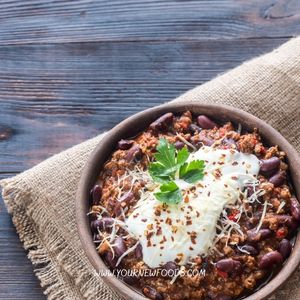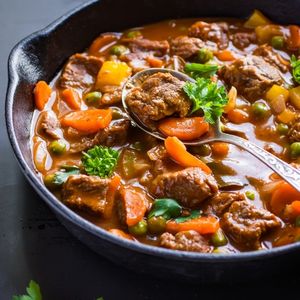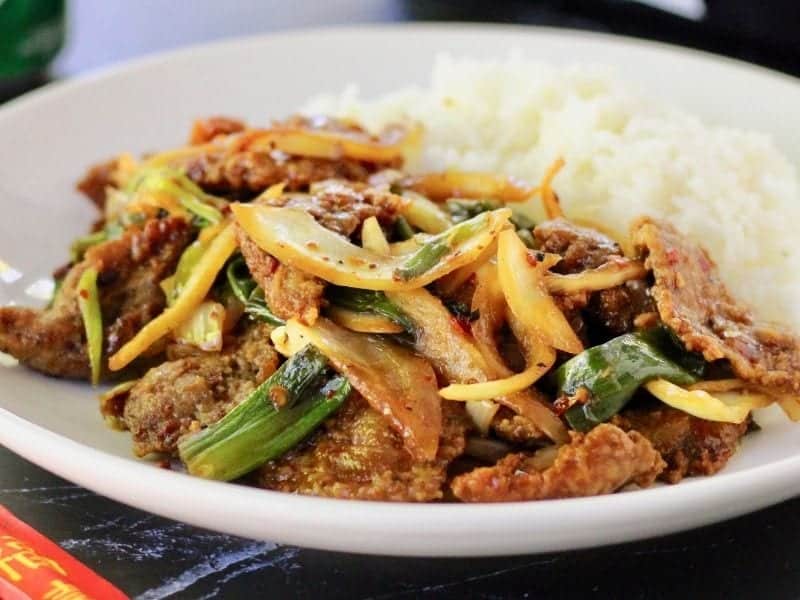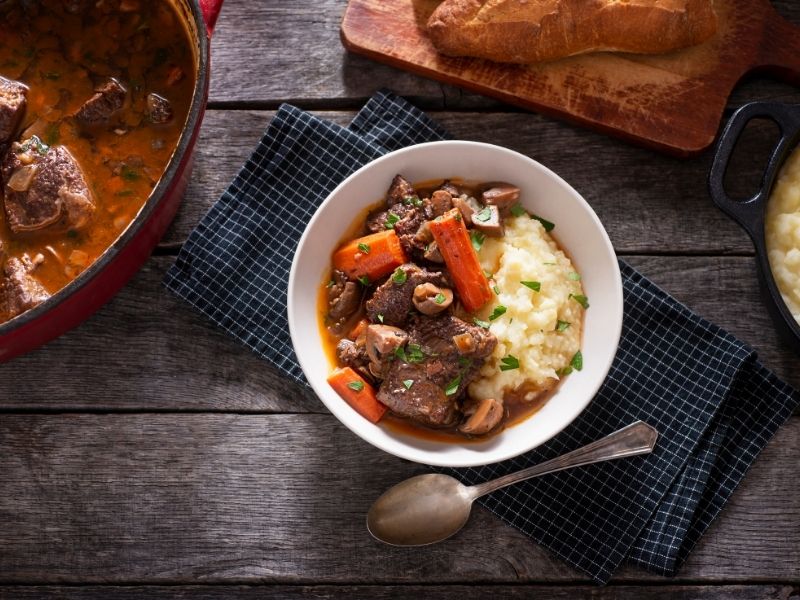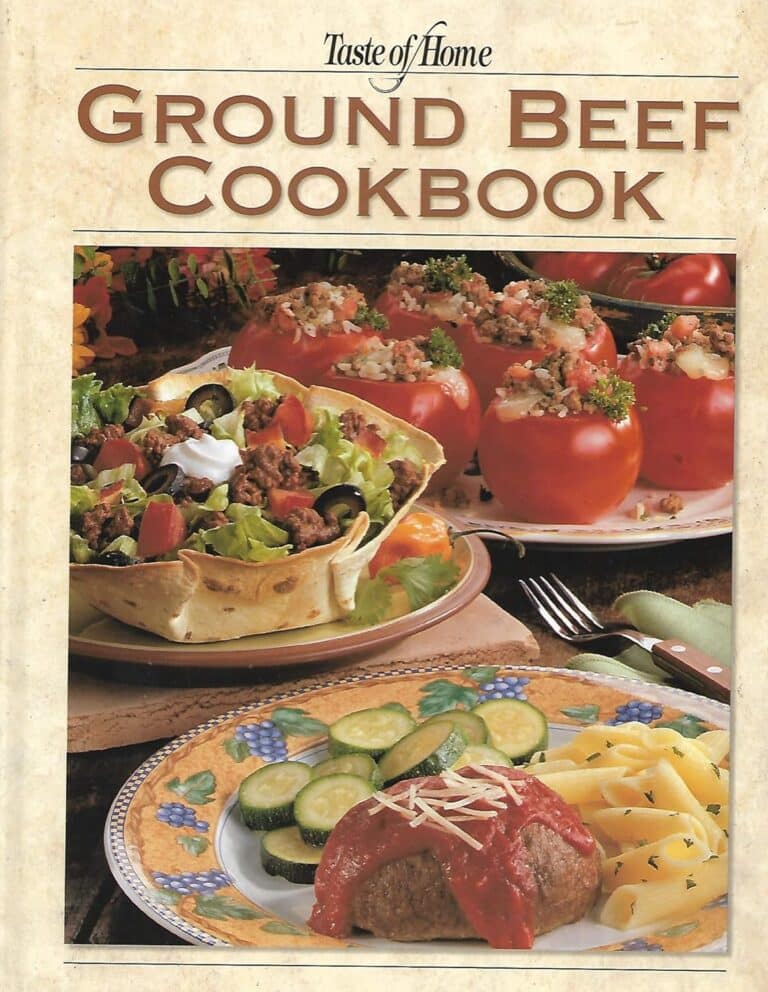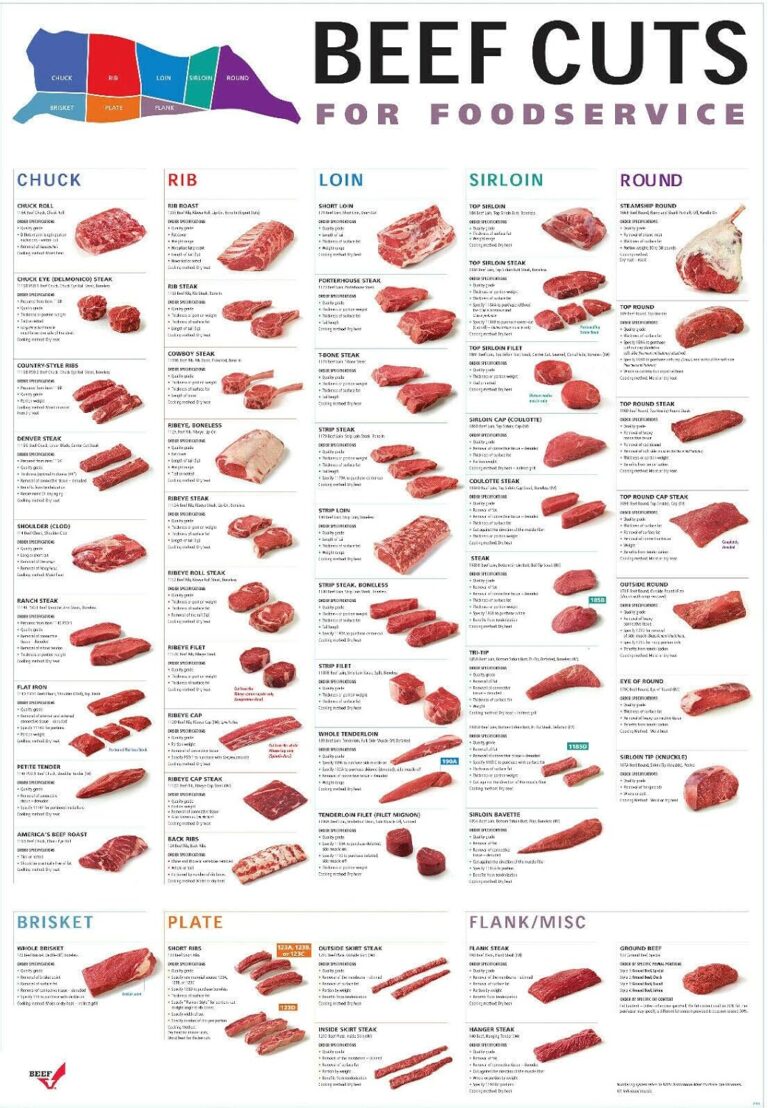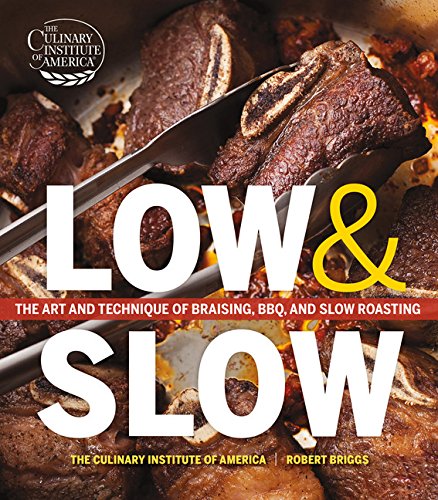Recipes with Beef: Your Ultimate Guide to Delicious Beef Dishes
Welcome to YourNewFoods.com, where culinary exploration is at the heart of everything we do.
Today, we’re embarking on a savory journey through the world of beef, a versatile and beloved ingredient that forms the backbone of countless classic and contemporary dishes.
Whether you’re aiming to perfect your burger game, explore international flavors, or master the art of slow-cooked stews, our guide to beef recipes is your passport to a world of delicious possibilities.
Key Takeaways
| Takeaway | Description |
|---|---|
| Unmatched Versatility | Beef’s adaptability shines in a myriad of dishes. |
| Global Culinary Adventure | Embark on a taste journey with beef dishes from around the world. |
| Techniques for Every Cook | From searing to slow cooking, beef recipes cater to all skill levels. |
| Endless Inspiration | Find new favorites and classic comforts. |
| Health and Nutrition | Beef’s role in a balanced diet, featuring essential nutrients. |

The Everlasting Appeal of Beef in Cuisine
Beef’s rich flavor and versatile nature make it a favorite ingredient in kitchens worldwide.
From the simplicity of perfectly grilled steaks to the complex layers of flavors in stews and curries, beef dishes offer something for every palate and occasion.
Let’s delve into the essence of cooking with beef, exploring the techniques, flavors, and inspirations that make beef recipes a staple in culinary traditions across the globe.
The Art of the Beef Burger
Nothing says classic comfort like a well-made beef burger.
A testament to beef’s universal appeal, the burger can be simple or gourmet, tailored to taste with various toppings and condiments.
Discover the secrets to crafting the perfect burger, including tips on choosing the right blend of beef for juiciness and flavor, here.
Beef and Pasta: A Match Made in Heaven
The combination of beef and pasta is celebrated in many cultures, offering a hearty and satisfying meal option.
From the robust flavors of Bolognese to the comforting simplicity of a beef and noodle casserole, explore a collection of recipes highlighting this perfect pairing, ensuring a dish to suit every occasion and taste preference here.
Exploring Global Beef Dishes
Beef’s versatility is evident in the wide array of international dishes that feature it prominently.
Whether you’re in the mood for the spicy kick of a Thai beef curry or the rich, slow-cooked warmth of a classic French stew, our recipe collection brings the world’s flavors to your kitchen. Find inspiration for your next culinary adventure here.
This introduction to beef recipes barely scratches the surface of what’s possible when you start experimenting with this flavorful and flexible ingredient. From quick weeknight meals to elaborate weekend feasts, beef offers endless possibilities to satisfy your culinary curiosity and hunger.
Mastering Beef Cooking Techniques
Understanding how to cook beef properly is key to unlocking its full potential in various dishes.
Whether aiming for a tender, juicy steak or a flavorful, slow-cooked stew, mastering basic techniques can elevate your beef dishes from good to extraordinary.
The Basics of Beef
Before diving into specific recipes, it’s important to understand the different cuts of beef and their best culinary uses.
From the tenderloin to the brisket, each cut offers unique flavors and textures, making it suited for specific cooking methods such as grilling, roasting, slow cooking, or braising.
Enhancing your knowledge of beef cuts and their ideal preparation methods will ensure that every beef dish you create is cooked to perfection.
Perfecting the Steak
A perfectly cooked steak is a hallmark of good cooking.
The key to achieving that ideal balance of crusty exterior and tender, juicy interior lies in understanding the importance of temperature, timing, and resting.
Explore our guide to cooking the perfect steak, including how to select the right cut, the use of marinades and rubs for added flavor, and the secrets to cooking steak to your desired doneness.
Perfecting the Steak: Your Ultimate Guide
Cooking the perfect steak is a skill that many aspire to master.
Achieving that ideal balance of a crusty exterior and a tender, juicy interior is the hallmark of good cooking.
This guide will walk you through the essential steps and considerations to help you cook steak perfectly every time, from selecting the proper cut to the final rest before serving.
Selecting the Right Cut
The journey to a perfect steak begins with selecting the right cut. The best cuts for pan-searing, grilling, or broiling include:
- Ribeye: Known for its rich marbling, which adds flavor and juiciness.
- Sirloin: Offers a good balance of flavor and tenderness without being too fatty.
- Filet Mignon (Tenderloin): The most tender cut, though less flavorful than others.
- T-Bone / Porterhouse: Offers the best of both worlds with portions of both tenderloin and sirloin.
Consider what you value most in a steak (flavor, tenderness, or a balance of both) and choose your cut accordingly.
Preparing Your Steak
Marinating and Rubs
- Marinades: Ideal for adding moisture and flavor, especially for tougher cuts. Ingredients like oil, vinegar, or citrus juice help tenderize the meat, while herbs and spices add depth of flavor.
- Rubs: Dry rubs are perfect for creating a delicious crust. You can use a simple salt and pepper rub or a blend of spices tailored to your taste. Remember, the salt helps to bring out the steak’s natural flavors.
Bringing to Room Temperature
Allow your steak to room temperature for about 30 minutes before cooking. This step ensures more even cooking.
Cooking Your Steak
Temperature and Timing
- High Heat: Start with a very hot pan or grill to sear the steak, creating a flavorful crust.
- Doneness: Use a meat thermometer to achieve your desired level of doneness:
- Rare: 120-125°F (49-52°C)
- Medium Rare: 130-135°F (54-57°C)
- Medium: 140-145°F (60-63°C)
- Medium Well: 150-155°F (65-68°C)
- Well Done: 160°F (71°C) and above
Flip your steak only once during cooking to ensure a good crust.
Resting Your Steak
Resting is crucial. Once removed from heat, let your steak rest on a plate covered loosely with foil for 5-10 minutes.
Resting allows the juices to redistribute throughout the steak, ensuring each bite is juicy and flavorful.
Additional Tips
- Use the right tools: A cast-iron skillet or a high-quality grill can make a significant difference in achieving the perfect sear.
- Butter baste: For an extra flavor boost, consider basting your steak with butter and herbs (like thyme or rosemary) during the last couple of minutes of cooking.
- Slicing: Always slice against the grain to ensure tenderness.
By understanding and applying these principles, you’ll be well on your way to cooking steaks that are consistently delicious, with the perfect balance of texture and flavor.
Whether you prefer your steak rare or well-done, mastering these techniques will elevate your cooking and impress any guest at your table.
Slow Cooking and Braising
Slow cooking and braising are techniques that transform tougher cuts of beef into melt-in-your-mouth delicacies.
These methods are ideal for colder months or when you have more time to let dishes simmer, concentrate flavors, and tenderize meat through long, slow exposure to low heat.
Dive into the art of slow cooking with our collection of recipes, from traditional stews to modern takes on classic braises, and discover how patience can lead to the most rewarding meals here.
Beef in World Cuisines
Beef’s global appeal is showcased in the vast array of international recipes that feature it.
From the spicy, aromatic curries of Southeast Asia to the robust, comforting stews of Europe, beef plays a central role in many of the world’s most beloved dishes.
Expand your culinary horizons by exploring beef recipes from around the globe, learning how different cultures season, cook, and serve beef in ways that celebrate their unique culinary traditions here.
Cooking with beef offers an exciting opportunity to explore various flavors and techniques.
By starting with quality ingredients, choosing the right cuts for your recipes, and mastering a few key cooking methods, you can create beef dishes that are both satisfying and delicious.
Flavor Pairings and Seasonings
The robust flavor of beef makes it an ideal canvas for a wide array of seasonings and pairings.
From the boldness of garlic and rosemary to the subtlety of thyme and red wine, understanding how to complement beef’s natural tastes can transform your dishes.
We explore the art of seasoning, offering tips on creating harmonious flavor profiles that elevate your beef recipes to new heights. Learn more about perfecting your seasoning approach here.
Flavor Pairings and Seasonings: Elevating Beef Dishes
The robust beef flavor provides a versatile canvas for various seasonings and pairings. Understanding how to complement and enhance the natural tastes of beef can transform your dishes from good to unforgettable.
This guide explores the art of seasoning beef, offering tips on creating harmonious flavor profiles that elevate your recipes to new culinary heights.
Understanding Beef's Flavor Profile
Beef’s rich and savory flavor pairs well with a wide range of seasonings, from bold and spicy to subtle and sweet.
The key to perfect seasoning is balancing these flavors to enhance, not overpower, the natural taste of the meat.
Essential Seasonings for Beef
Salt and Pepper
- The Basics: Salt and black pepper are fundamental, enhancing the beef’s inherent flavors. Sea salt, kosher salt, and freshly ground black pepper are recommended for the best taste.
Herbs
- Rosemary and Thyme: These robust herbs complement the deep flavors of beef, especially in roasts and steaks.
- Oregano and Basil: Add a Mediterranean touch to beef dishes, perfect for Italian-inspired recipes.
- Parsley and Cilantro: Offer a fresh, bright contrast to the richness of beef, ideal in garnishes or marinades.
Spices
- Garlic: A classic pairing with beef, garlic adds a pungent, aromatic quality that penetrates the meat.
- Smoked Paprika and Cumin: Introduce warmth and smokiness, suitable for ground beef dishes and stews.
- Chili and Cayenne: Bring heat and intensity, ideal for dishes like chili con carne or spicy beef stir-fries.
Acids
- Red Wine: Adds depth and complexity, tenderizing the beef while infusing it with rich flavor.
- Balsamic Vinegar: Offers a sweet-tart balance that can enhance the natural sweetness of beef.
- Lemon Juice: Its brightness can lift beef dishes, especially in marinades or as a finishing touch.
Tips for Perfect Seasoning
- Balance Flavors: Aim for a balance between savory, sweet, acidic, and spicy elements to create a round, full-flavored dish.
- Marinate: For deeper flavor infusion, marinate beef with a mix of herbs, spices, and acids. Even a short marination time can make a significant difference.
- Layer Flavors: Start with a base of salt and pepper, add herbs and spices during cooking, and finish with fresh herbs or a squeeze of lemon for complexity and brightness.
- Season Early: For thicker cuts, season well in advance of cooking. This allows the salt to penetrate the meat, enhancing flavor and texture.
- Taste as You Go: Adjust seasonings as you cook, especially when making soups, stews, or sauces. The flavors will develop and change over time.

Creating Harmonious Flavor Pairings
Experiment with different herbs, spices, and acids combinations to discover your preferred flavor profiles. Here are a few classic pairings to get you started:
- Beef and Red Wine: Perfect for slow-cooked dishes like beef bourguignon.
- Garlic and Rosemary: Ideal for roasting or grilling steaks and beef roasts.
- Chili and Lime: Offers a zesty kick, great for tacos or beef stir-fries.
The art of seasoning is a journey of exploration and experimentation. By understanding the basic principles and playing with different combinations, you can elevate your beef dishes to extraordinary culinary experiences.
Whether cooking a simple steak or a complex stew, the right seasonings can transform your beef into a masterpiece of flavors.
The Nutritional Profile of Beef
Beef is not just delicious; it’s also nutritious. Rich in essential nutrients like protein, iron, zinc, and B vitamins, beef can be a valuable part of a balanced diet.
We delve into the health benefits of beef, discussing how to enjoy it responsibly and make the most of its nutritional offerings.
Whether you’re looking to build muscle, boost energy, or simply enjoy a satisfying meal, beef has a lot to offer.
Sharing the Love: Beef Dishes for Every Occasion
Cooking is an act of love, and sharing a meal is one of the simplest yet profound ways to connect with others.
Beef dishes, in particular, bring people together, from family dinners to festive gatherings. We share ideas for incorporating beef into meals meant for sharing, ensuring your next get-together is both delicious and memorable.
Whether it’s the comfort of a Chilli Con Carne or the elegance of a Beef Bourguignon, find inspiration for dishes that will warm hearts and satisfy appetites.
As we wrap up our journey through the world of beef recipes, remember that cooking with beef offers endless possibilities to explore flavors, techniques, and traditions.
Whether you’re a novice cook or a seasoned chef, there’s always something new to discover and enjoy in beef cuisine.
Let YourNewFoods.com be your guide as you explore, create, and share the beautiful dishes that beef offers.





